Montréal is the largest city in Canada’s Québec province. It’s set on an island in the Saint Lawrence River and named after Mt. Royal, the triple-peaked hill at its heart. Its boroughs, many of which were once independent cities, include neighbourhoods ranging from cobblestoned, French colonial Vieux-Montréal – with the Gothic Revival Notre-Dame Basilica at its centre – to bohemian Plateau.
Historically the commercial capital of Canada, Montreal was surpassed in population and in economic strength by Toronto in the 1970s. It remains an important centre of commerce, aerospace, transport, finance, pharmaceuticals, technology, design, education, art, culture, tourism, food, fashion, video game development, film, and world affairs. Montreal is the location of the headquarters of the International Civil Aviation Organization, and was named a UNESCO City of Design in 2006. In 2017, Montreal was ranked the 12th-most liveable city in the world by the Economist Intelligence Unit in its annual Global Liveability Ranking, although it slipped to rank 40 in the 2021 index, primarily due to stress on the healthcare system from the COVID-19 pandemic. It is regularly ranked as a top ten city in the world to be a university student in the QS World University Rankings.
1.Wander through Old Montreal
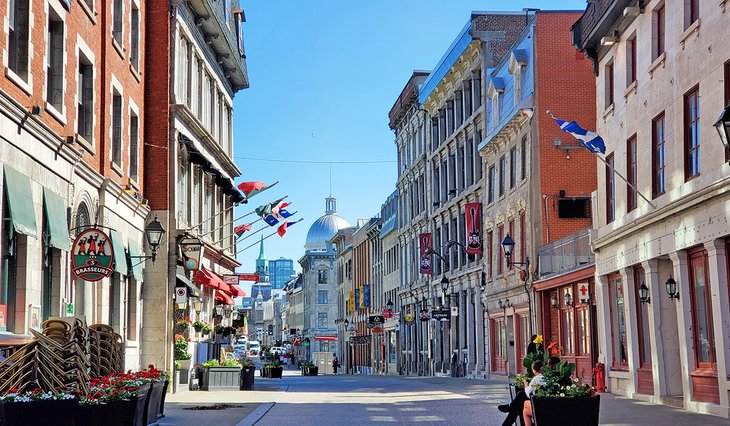
Dating to the 17th century, Old Montreal’s narrow cobblestone streets are full of lively plazas and charming shops and cafes. Landmarks include the Notre-Dame Basilica, a soaring Gothic Revival church, and the Pointe-à-Callière museum with city archeological ruins. Along the St. Lawrence River, the Old Port of Montreal is home to the Montreal Science Centre and the iconic Clock Tower, with views from the top.
Old Montréal is tourist central in Montréal. The area is home to a remarkable concentration of buildings dating from the 17th, 18th, and 19th centuries and has the delightful feel of a Parisian-style quarter. Many of these historic buildings are now hotels, restaurants, galleries, and souvenir shops. If you are looking to base yourself in the city for a few days of sightseeing, this is the best place to stay.
Its many historic sites, streets, and landmarks are easily explored on foot. Of the many things to do here, the highlights are visiting the Notre-Dame Basilica, strolling down Rue Saint-Paul, wandering around Bonsecours Market, and enjoying the open-air gathering space of Place Jacques-Cartier. For a little urban adventure, on the waterfront is the huge Ferris wheel (La Grand roue de Montréal) and the Tyrolienne MTL zipline.
2. See the View from Mont-Royal
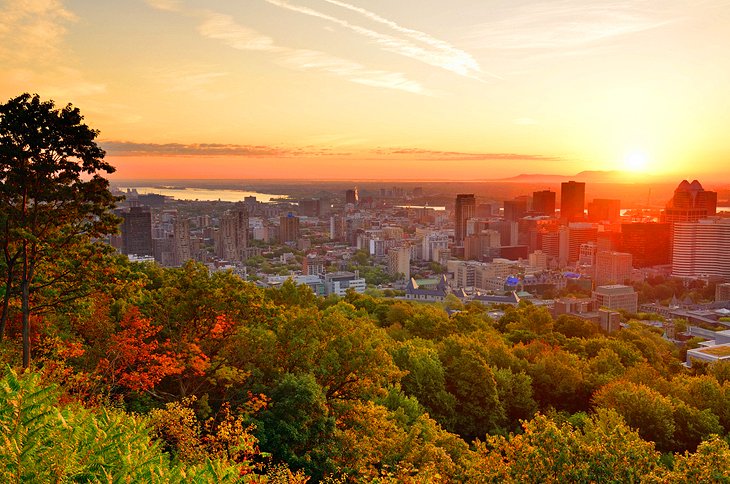
Mount Royal is a large intrusive rock hill or small mountain in the city of Montreal, immediately west of Downtown Montreal, Quebec, Canada. The best-known hypothesis for the origin of the name Montreal is the hill is the namesake for the city.
Mont-Royal rises 233 meters above the city and is the green lung near the city center. A stroll through this lovely park enables the visitor to see monuments to Jacques Cartier and King George VI, to spend some time by Lac-aux-Castors, and to have a look at the cemeteries on the western slope where the city’s different ethnic groups have rested in peace together for centuries.
is a large intrusive rock hill or small mountain in the city of Montreal, immediately west of Downtown Montreal, Quebec, Canada. The best-known hypothesis for the origin of the name Montreal is the hill is the namesake for the city.
The hill is part of the Monteregian Hills situated between the Laurentians and the Appalachian Mountains. It gave its Latin name, Mons Regius, to the Monteregian chain. The hill consists of three peaks: Colline de la Croix (or Mont Royal proper) at 233 m (764 ft), Colline d’Outremont (or Mount Murray, in the borough of Outremont) at 211 m (692 ft), and Westmount Summit at 201 m (659 ft) elevation above mean sea level.
3.Explore the Old Port
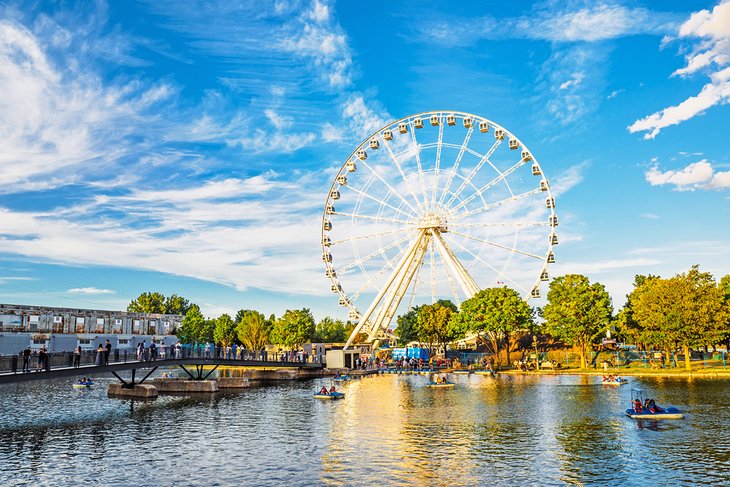
As you wander around Old Montreal, you’ll most likely end up in the lively area by the Saint Lawrence River known as the Old Port (Vieux-Port). Here, you’ll find plenty of things to do, from riding the giant Ferris wheel or climbing the famous clock tower, right through to screaming down a zipline that descends from dizzying heights across open stretches of water.
The historical Old Port offers Montrealers and visitors alike access to a wide variety of activities, including the Montréal Science Centre, with an IMAX Theatre, and the Montreal Clock Tower. It offers riverfront access for walking, cycling, roller-blading, quadricycle, pedalo and Segway rentals. It is also located at the eastern end of the Lachine Canal, which has itself been extensively refurbished as a popular destination for cycling, roller-blading and pleasure boating. Cultural events include the Festival Montréal en lumière, Igloofest and the Matsuri Japon festival.
The Old Port was also known as one of the most famous fishing spots in the greater Montreal area. A popular shore fishing position is Parc de la Cité-du-Havre, which provides a fishing spot with a wide range of fish species. In the winter, ice fishing events were held on the ice inside the old port.
4.Notre-Dame Basilica
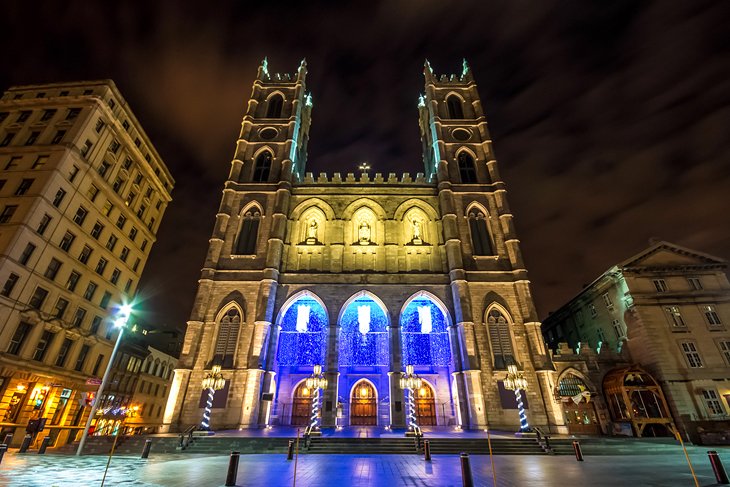
Founded in 1656, Montréal’s oldest church, Notre-Dame Basilica, stands in a far grander incarnation than the original. The twin towers of the neo-Gothic façade face Place d’Armes. The intricate and resplendent interior was designed by Victor Bourgeau.
Construction of the cathedral began in 1163 under Bishop Maurice de Sully and was largely completed by 1260, though it was modified frequently in the centuries that followed. In the 1790s, during the French Revolution, Notre-Dame suffered extensive desecration; much of its religious imagery was damaged or destroyed. In the 19th century, the coronation of Napoleon I and the funerals of many of the French Republic’s presidents took place at the cathedral.
The 1831 publication of Victor Hugo’s novel Notre-Dame de Paris (known in English as The Hunchback of Notre-Dame) inspired popular interest in the cathedral, which led to a major restoration project between 1844 and 1864, supervised by Eugène Viollet-le-Duc. On August 26, 1944, the Liberation of Paris from German occupation was celebrated in Notre-Dame with the singing of the Magnificat. Beginning in 1963, the cathedral’s façade was cleaned of centuries of soot and grime. Another cleaning and restoration project was carried out between 1991 and 2000.
The cathedral is one of the most widely recognized symbols of the city of Paris and the French nation. In 1805, it was awarded the honorary status of a minor basilica. As the cathedral of the archdiocese of Paris, Notre-Dame contains the cathedra of the archbishop of Paris (Laurent Ulrich).
5.Parc Jean Drapeau
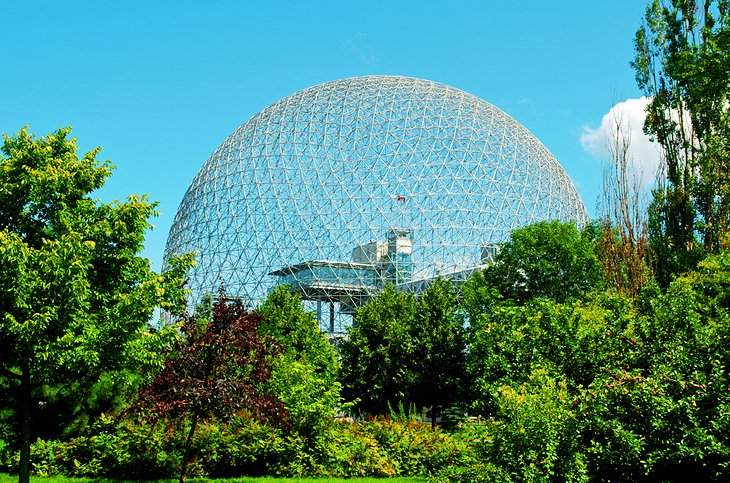
Jean Drapeau Park is the third-largest park in Montreal, Quebec, Canada. It comprises two islands, Saint Helen’s Island and the artificial island Notre Dame Island, situated off the shore of Old Montreal in the Saint Lawrence River. The islands were the site of the Expo 67 World’s Fair.
Île Sainte-Hélène (named after the wife of Samuel de Champlain) and the artificial island of Notre-Dame were the site of Expo ’67. They are now known as Parc Jean Drapeau and have many family-minded attractions.
The islands were the site of the Expo 67 World’s Fair. Notre Dame Island was constructed for the exposition, and Saint Helen’s Island artificially extended at its north and south ends. The park was renamed in honour of Jean Drapeau, the late mayor of Montreal and initiator of Expo 67.
6.Place des Arts
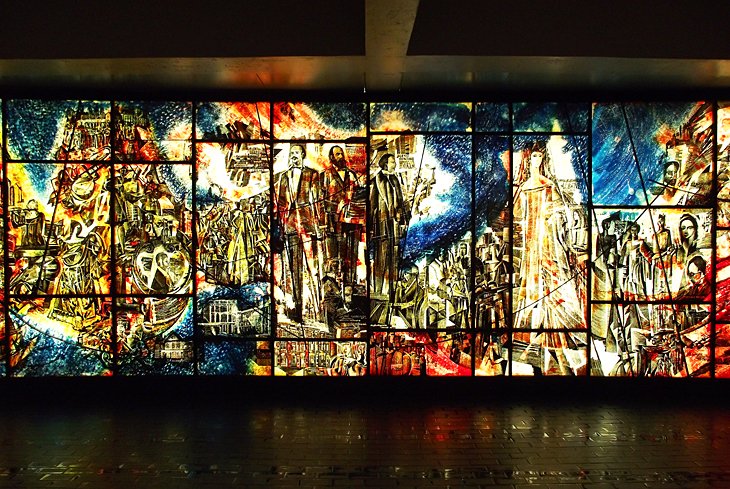
The Place des Arts is an entire complex dedicated to visual and performing arts, the largest of its kind in all Canada. Three great cultural organizations make their home here: the Montreal Symphony Orchestra, Les Grands Ballets Canadiens, and the Opéra de Montréal, and its various stages and rehearsal halls provide venues for all kinds of theater, music, dance, films, and events. These sit around a large esplanade decorated with works of art, fountains, and water cascades, a popular venue for events. The most important of these is the annual summer Festival International de Jazz de Montréal held in late June and early July, attracting visitors from all over the world and bringing in some of the biggest names in jazz.
Place des Arts was an initiative of Mayor Jean Drapeau, a noted lover of opera, as part of a project to expand the downtown core eastward from the concentration of business and financial activity in the centre-west part of downtown. The Corporation George-Étienne-Cartier, named in honour of George-Étienne Cartier, a Father of Confederation and opera lover, was set up to build it, and the first part of the complex (including the Salle Wilfrid-Pelletier) was inaugurated on September 21, 1963. The other theatres were added progressively.
7. Shop at Atwater and Jean Talon Markets
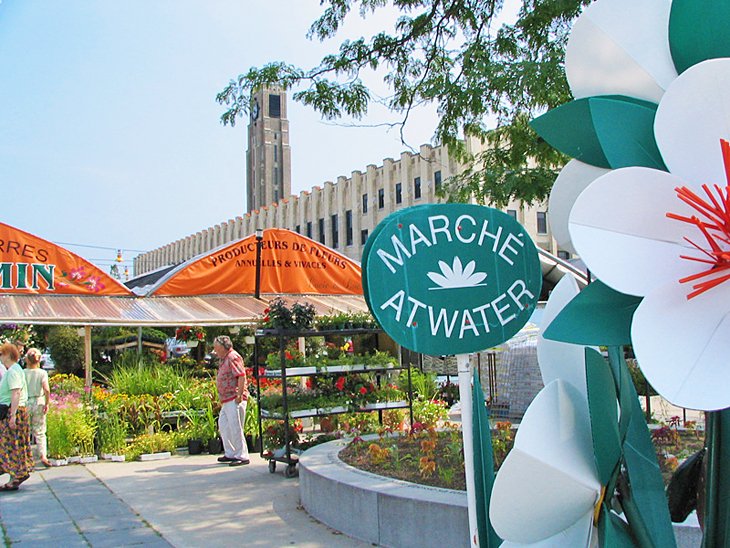
Similar establishments with many of the same vendors, the Atwater Market and Jean Talon Market are Montréal’s busiest public markets and well worth visiting for their atmosphere and local food specialties and products.
Located in warehouse-style buildings, the markets feature vendors selling fruits and vegetables, flowers, meats, fish, cheese, baked goods, and specialty foods. You’ll find maple syrup and candies, dried wild blueberries, home-style fruit jams and preserves, and the region’s fine cheeses, as well as restaurants and cafés selling luscious pastries. The markets are a favorite stop for locals on Saturday mornings for a boule of coffee and a flaky croissant.









